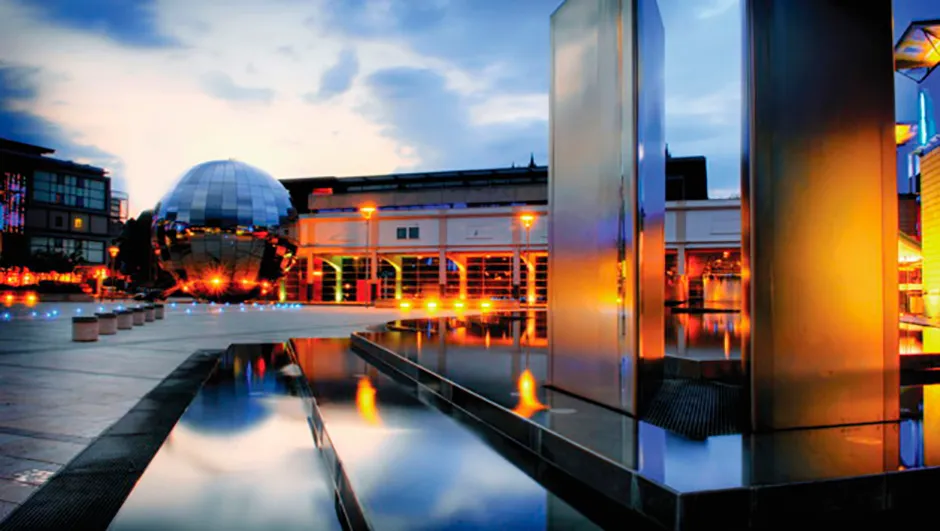At-Bristol's new 3D planetarium lets you fly through the rings of Saturn, or out to distant nebula. Image Credit: Tim Martin
Last month, BBC Sky at Night Magazine's home city of Bristol was able to claim an astronomical accolade, the opening of the UK's first 3D planetarium.
And since it is on our doorstep, in the At-Bristol science centre, we were anxious to see what it was like.
The chance came at a special after-hours viewing, organised for members of the Bristol Astronomical Society.
BBC Sky at Night Magazine staff were asked along for a special tour of the Galaxy from the comfort of the planetarium.
Before beginning the show, planetarium manager Lee Pullen told us a little about what makes the new planetarium unique, and a first for the country.
“We’re the only 3D planetarium in the UK and the most technologically advanced; and we have the largest team of planetarium presenters [at a fixed dome] in the UK,” said Pullen.
The 3D views, for which the audience wear active 3D glasses rather than the polarised lenses you would find in a regular cinema, are thanks to two new 4K 3D projectors, the first of their kind to be made anywhere in the world.
“The 4K projectors combined with the high frame rate of 120 fps results in us putting 1.6 billion pixels every second onto our dome,” said Pullen.
“We’re pretty sure no-one else in the country can match that.”
Usually the planetarium will have a presenter take visitors through a pre-planned sequences to use the full 3D capability of the venue, but on our visit we were lucky enough to be given some ‘free-flight time’: society members were given time at the Planetarium's control hub to move the display to wherever they wanted to go.
Starting out in our local Solar System, we were taken on a breathtaking flight through the rings of Saturn, watching ice particles as they zipped past in 3D, seemingly jumping out from the dome above and hanging there in front of our eyes.
After a brief stop at Jupiter we moved further afield to the Helix Nebula, taking a trip through clouds of its gas that had been rendered in 3D, before visiting other stars.
This became a particularly strange experience when Pullen turned on the red lines that mark familiar constellations.
As he sped away from the Solar System the lines streaked off into strange new patterns, a vivid visual demonstration of how stars that appear close together from Earth are, in reality, vastly far apart.
But what made the event was the ability to actually control the dome itself.
Members of the audience were given special access to the complex control interface, and expert guidance on how to select a target, travel through space to it, go into orbit around it, and even touch down on its surface.

Accordingly, we watched a landing next to the central peak of Crater Tycho on the Moon, and a low-level flyby of Mars's Mons Olympus.
To finish off the evening, the film ‘We are Aliens’ came on, once again taking advantage of the spectacular 3D.
To be taken from Earth, through the canyons of Europa, to distant stars and planets in the search for life, was an incredible ending to a spectacular evening.